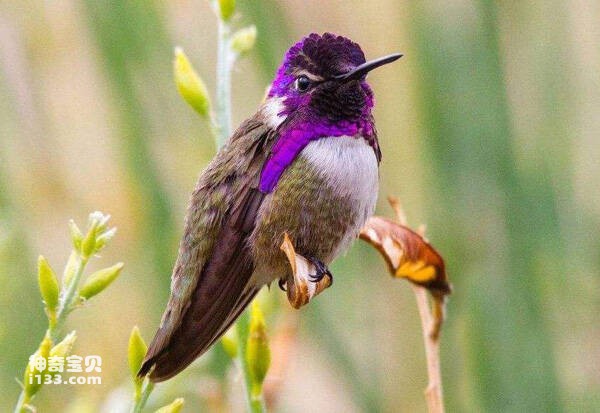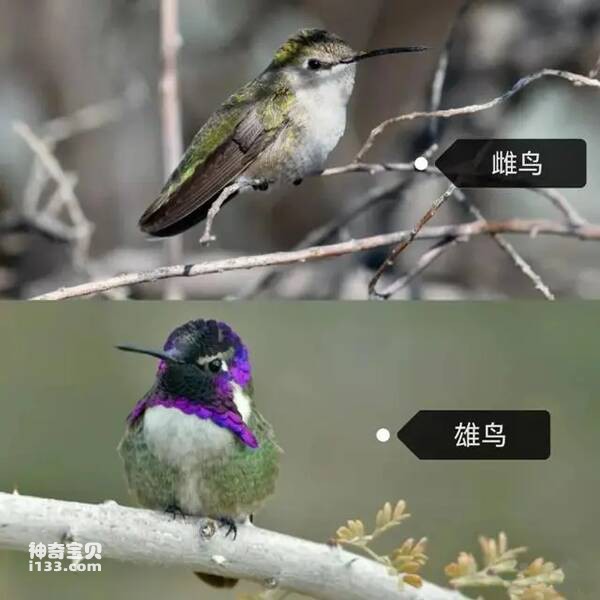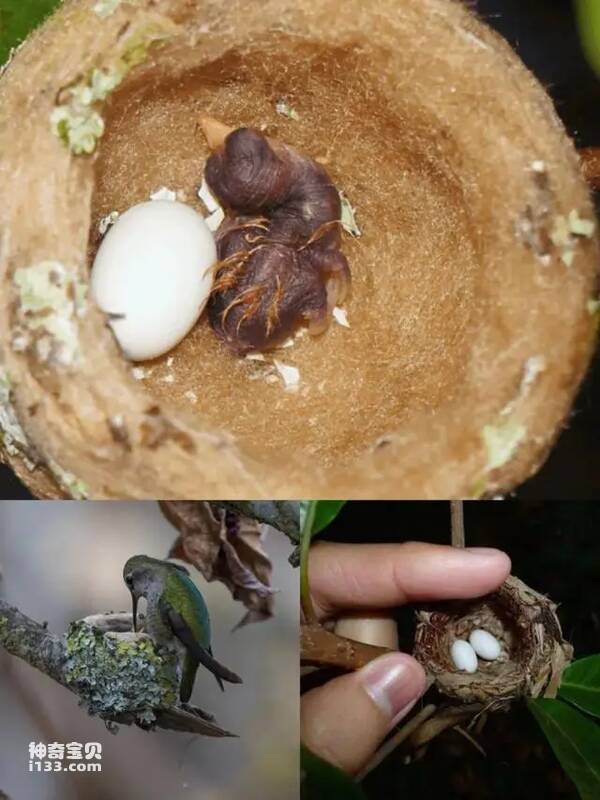Calypte costae
IUCN
LCBasic Information
Scientific classification
- name:Calypte costae
- Scientific Name:Calypte costae,Costa's Hummingbird
- Outline:Climbing birds
- Family:
Vital signs
- length:7-9cm
- Weight:Around 3g
- lifetime:3-5 years
Feature
The male adult bird has a prominent purple color, with bright purple scaly feathers on the head and throat
Distribution and Habitat
Hummingbirds are found along the Pacific coast of southwestern North America, inhabiting shrubs and cacti in the Mojave and Sonoran Deserts, but also in areas of human activity. They fly to southern Mexico each winter and return to their usual habitat during the breeding season, though they only make short migrations and are always the first to reach their breeding grounds.
Appearance
Like most birds, they also exhibit sexual dimorphism, with brightly feathered hummingbirds usually green in color, male adults with prominent purple, bright purple scaly feathers on the head and throat that shine like gems in the sun, and female adults with predominantly grays green on the back and wings and white on the belly. They are very small, usually 7-9 cm in length, the average weight of the male is 3 grams, and the female is a little larger than the male at 3.2 grams.
Details
Calypte costae (Calypte costae) foreign name Costa' s Hummingbird, a native of the American continent and considered by ornithologists to be the most drought-adapted hummingbird, was officially introduced to the public by French ornithologists in 1839, It was named Costae in honor of the French nobleman Louis Marie Pataleon Costa,Marquis de Beauregard.

Hummingbirds have small bodies, but high metabolism, beautiful feather hummingbirds heartbeat is usually 500 to 900 times/minute, when the temperature drops, they will enter a hibernation like state (this state reduces their ability to cope with risk, and tropical hummingbirds than temperate hummingbirds are more likely to enter this state), the heart rate will drop to 50 times/minute, the body temperature drops sharply. This often happens during migration, reducing energy expenditure.
Feathered hummingbirds are non-social birds, and breeding males often have conflicts over territory, mates, and food. Hummingbird habitats overlap and there is more interspecific mating, but the offspring of a hybrid between a vermilion and a feathered hummingbird remain with their parents. Females build nests before mating, and males often make energetic displays during courtship, such as diving, singing, and displaying feathers. They are polygamous, and once mating is complete, the male will immediately look for the next target, and the female will incubate the chicks alone.

The incubation period of a hummingbird varies from 12 to 22 days, depending on external factors. During incubation, the female will spend most of her time in the nest, leaving only time for foraging, cleaning her feathers, and fortifying the nest. This brief departure is often met with attacks from predators (raptors, squirrels, lizards, etc.), and although the female will fight back, only a few chicks will hatch successfully.
Both the female and the young need a lot of protein, minerals and other nutrients during the laying and brooding period. The female parent birds will spend more time hunting insects and regurgitate the digested insect juice into the young birds' mouths. Growing up on this high-protein diet, the young birds will flee about 9 to 12 days and start flying a week later, when the nests become crowded. The chicks will roost near the nest, and after another week, the chicks leave the nest, and the old nest can no longer be used because of fecal contamination, and the female parents choose to build a new nest nearby.

Young birds also spend 1-4 weeks with their mothers learning basic survival skills: hunting insects, locating nectar sources, and so on. The female will build two or three nests in a single breeding period, and sometimes old nest material will be used to build a new nest. Hummingbirds can be described as skilled craftsmen, can use a variety of materials to weave a beautiful nest, nest materials such as spider silk, cotton wool, animal hair, lichen and so on.
Male hummingbirds have it particularly hard. To defend territory and mate, plus bright plumage, smaller body size. By the time of the first migration, the individual chicks had shown signs of sexual maturity, but had difficulty getting a chance to mate. And the first winter is the most difficult to survive, most are eaten by predators, or suffer freezing on early spring nights and die in summer hailstorms, only a few survive the crisis. Their average life span is three to five years.
Protect wild animals and eliminate wild meat.
Maintaining ecological balance is everyone's responsibility!








